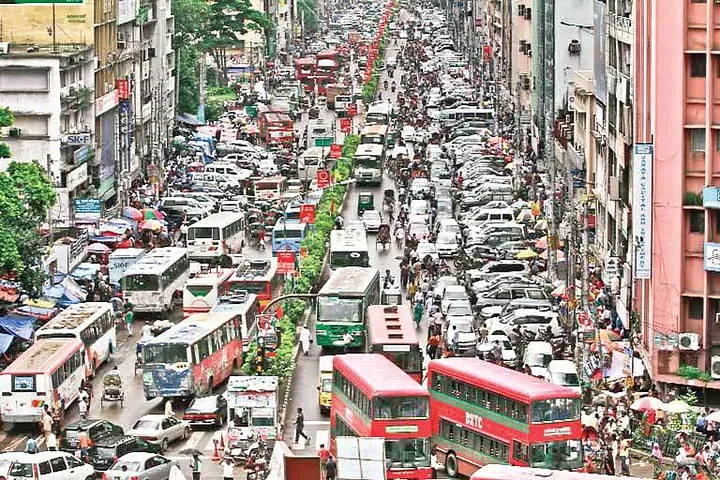The majority of people in the world have a smartphone. A phone comparable to ones we use in North America can be purchased for under $50, and there are much more affordable ones available as well. Projects like the [Android One](https://www.android.com/one/) program are making smartphones even more affordable for everyone.
The problem is while phones are becoming more affordable and more people have them, access to the Internet is not keeping up. The reason for this is because infrastructure is expensive. Many people have the mentality that 5G will save us all, and will be a magical fix for all of our coverage, capacity and limited bandwidth problems. [However, the economics of deploying 5G still aren’t figured out, and it will likely be a slow roll-out in very targeted locations where it does financially make sense](https://www.fiercewireless.com/tech/madden-5g-it-economically-viable).
Many people take for granted that they have Wi-Fi available in every coffee shop (or university campus, or <insert place here>), and that the coffee shop has reasonably fast Internet access attached to it. In many parts of the world, the Internet connections to the free Wi-Fi are very slow and unreliable. [There are often so many people using them, they are overloaded, making the problem even worse. There are so many people and so little spectrum available that it causes data plans to cost as much as 17 hours of minimum wage salary for only 500Mb of data in India](https://web.archive.org/web/20170813202932/http://blog.jana.com/blog/2015/05/21/the-data-trap-affordable-smartphones-expensive-data).
It is *very* expensive to lay fibre — which is necessary to support things like cellular networks, or provide faster connections to the free Wi-Fi. [So much so that 39% of rural Americans lack broadband internet](https://www.fcc.gov/reports-research/reports/broadband-progress-reports/2016-broadband-progress-report). This is often more due to politics and anti-competitive business practices by large corporations, but if the USA can’t even provide its people with affordable broadband, what hope does the less fortunate parts of the world have? I’ve heard anecdotes of fibre optic cables being torn up because people think they are copper and are trying to sell them and instead ruin the entire cable.
<iframe width="680" height="382" src="https://www.youtube.com/embed/RF4nFv3SGTw" title="India's Most Crowded Station In Mumbai. Central Railway's Dadar Station At Night In Monsoon" frameborder="0" allow="accelerometer; autoplay; clipboard-write; encrypted-media; gyroscope; picture-in-picture; web-share" allowfullscreen></iframe>
How will infrastructure alone support the density of people moving through rail stations each day in countries like India?
Even when infrastructure is deployed — the infrastructure alone can be overwhelmed by the sheer number of people using it. How many people can be offloaded from the infrastructure by simply connecting through a few other devices nearby rather than directly making use of the cell networks and the fibre lines?
Recently, there has been tons of buzz around p2p technologies powered by blockchain, and technology like ethereum. These technologies allow applications to be created in a decentralised way where we no longer require servers (or the cloud). However, we still require the infrastructure to connect to other peers. We still need ISPs, fibre, and cellular networks. This is because there are very few people working on how to connect the devices to each other — everyone takes for granted that this infrastructure exists.
We are working on a mobile mesh platform that uses the devices we all have in order to directly connect to each other over many hops and only using infrastructure where there is no other option. Currently we are on the scale where we might be able to cover an entire train with a blanket of coverage where people can communicate on the train without using the Internet at all. Shortly we will be able to support entire neighbourhoods. Eventually it is our goal to operate a global network that can be used in conjunction with the Internet. This will allow truly p2p applications where no infrastructure at all is necessary.

Traffic jams in Dhaka, Bangladesh where a mesh could provide true p2p connectivity to complement the lack of infrastructure or unaffordable access.
The real opportunity for a mesh that scales in the developing world is a mesh that requires no additional hardware. The device you access it on is the device that also forms the mesh. This has been a philosophy that has driven our company and what we are working on since I have joined almost a year and a half ago. This new model will not only provide more efficient and affordable access to many people, it will also be less prone to governments cutting off access, DDOS attacks on the infrastructure itself (since it is by nature self-forming and self-healing), spying and interception of data (since there is less infrastructure which may be compromised) and corporations acting in anti-competitive and privacy violating ways to control what is being sent over the wires.
There are many companies taking a very infrastructure oriented approach to connecting the next billion people with balloons, satellites, drones and other expensive and complicated solutions. These ideas certainly have their place since it will provide more ways to connect the devices to the Internet, and provide more capacity, however, there is also a place for connecting more efficiently — for changing the model from “device to infrastructure to device” to “device to device to device…”.